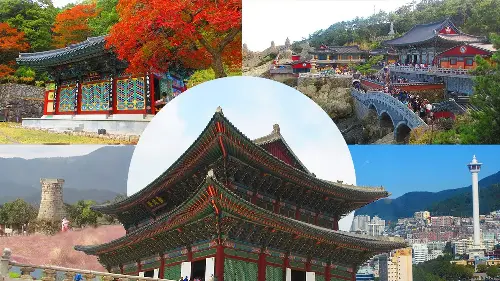
South Korea is a popular vacation destination for Filipinos.
We love K-pop, K-dramas, Korean food, Korean beauty products, and all sorts of things from Korea. Some brands even use Korean idols to endorse their products. Our familiarity with the culture (and sometimes the history) of the country makes it a bucket list destination for many.
South Korea has plenty to offer visitors who want to experience all that the country has to offer. They won’t be disappointed once they get to visit. It’s also easy to explore on your own because of the extensive, efficient, and accessible public transportation connecting cities.
Getting a visa
Filipinos need to get a visa first to enter South Korea. Here are the basic requirements for a tourist visa:
- Filled out application form (computerized)
- 1 passport size colored photo
- Valid passport
- Photocopy of passport bio-page
- Original & copies of valid visa/s and arrival stamps to OECD member countries for the past five years (If applicable only)
- Bank certificate
- Bank statement (original or certified true copy for the last 3 months)
- Photocopy of ITR (Income Tax Return) or Form 2316
Requirements may vary depending on your category.
It’s possible for walk-in applicants to submit their applications. You can go to the Korea Visa Application Center located at 9/F (zone 2) Brittany Hotel 6 McKinley Parkway, Aura Complex, BGC, Taguig, Metro Manila. Individual applicants can go to the center from 9am to 4pm. You can visit the center’s website for more information.
Get into South Korea
There are regular flights to Seoul from Manila via Air Asia, Philippine Airlines and Cebu Pacific. Wait for special promotions to get the lowest airfare possible for your trip. Plan your trip for months in advance to save money.
Get out of Incheon Airport
It’s convenient to get out of Incheon Airport to Seoul. You can take the airport limousine bus. You can check their website here for information about routes and schedules. The Airport Railroad Express is also an option. Taxis are an expensive alternative for early morning and late night arrivals.
Getting around
You can take the bus or the train whenever you travel between cities in South Korea.
You can book bus tickets or check schedules online here. You can buy train tickets or check schedules here.
Itinerary
This itinerary assumes you begin with one full day.
Seoul
Day 1
After breakfast, get an early start to the day to see some of Seoul’s main attractions.
I would recommend seeing some of the city’s historic and cultural sites to get a glimpse of ancient times. See some of the palaces, such as Gyeongbokgung and Changdeokgung, both of which date to the Joseon Dynasty. Check out another palace such as Changgyeonggung which King Sejong built in the 15th century. Explore these three palaces to see the kind of life the royal family and imperial court lived centuries ago.
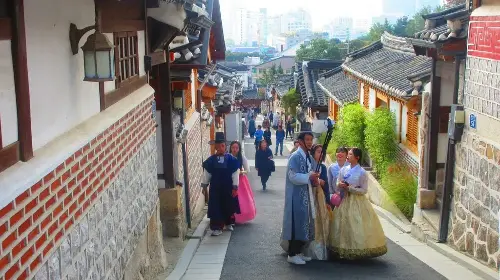
After visiting the palaces, check out Bukchon Hanok Village to see traditional architecture amid the modern concrete jungle of Seoul. Some of the hanoks or traditional houses, are now tea houses, cultural centers, or other establishments. However, some are actual homes and not tourist attractions, so be respectful. There are other places of interest near the area of the village and the palaces; however, I suggest visiting just four attractions for the day so that you won’t rush through them.
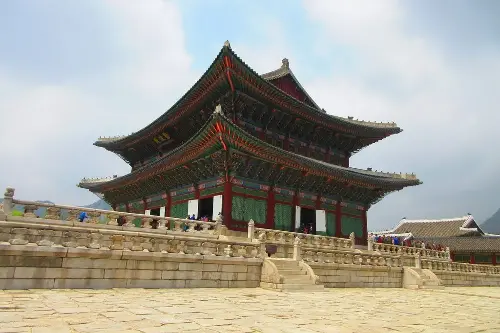
You can check out Gangnam district to shop (or just window shop), get something to eat, and get a feel of Seoul’s modern vibe. While in the neighborhood, you can also visit the Starfield Library in COEX Mall. You can hit up other spots in the city, such as Hongdae, Sinchon, Myeongdong, Itaewon, and Dongdaemun. These districts come alive at night.
Day 2
On your second day, go on a day trip to the DMZ. The demilitarized zone is between the borders of North and South Korea. Learn more about the history of the tension between the two countries, the Korean War, and the Cold War with a guided tour. You’ll see various exhibits and visit areas such as the DMZ Exhibition Hall, Third Infiltration Tunnel, and the Freedom Bridge just to name a few. You can also get a glimpse of the North Korean side of the border using the binoculars in the observation tower. It’s a long, but scenic drive through the countryside from Seoul. You can find various tours online and from Klook.
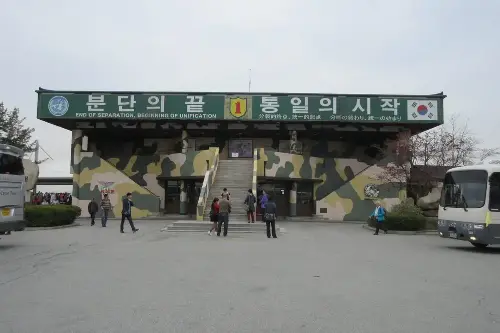
End your day in your favorite spot in the city. This could be in Hongdae, Sinchon, Myeongdong, Gangnam, Itaewon, Dongdaemun, or other places. Seoul comes alive at night with plenty of bars and restaurants to choose from.
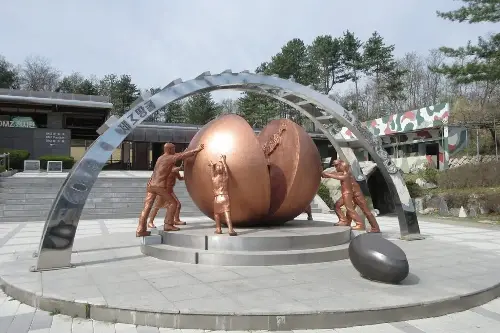
Day 3
After breakfast, check out of your accommodation for some more sightseeing before leaving for Busan late in the afternoon. When taking the bus and booking online, look for Dongseoul or Gyeongbu for departures from Seoul.
You have a few options for attractions and districts to visit before you leave, such as Jongmyo Shrine, Insadong, N Seoul Tower, National Museum of Korea, Cheonggyecheon Stream, Lotte World Tower, and other places.

Choose places you’re interested in based on the limited amount of time you have. Be mindful of the distance between attractions and the bus terminal. You should also consider the check-in time of the accommodation you’ll stay in Busan. You can take the bullet train to Busan to reduce the travel time if you have the budget for it.
Busan
Day 4
Get an early start so that you can maximize your day. Bring some snacks and drinks or buy some on the way for your day trip.
Your first stop is the UNESCO-listed Tongdosa Temple. You can take the metro to Nopo Station then make your way to the bus terminal. Board a bus bound for Tongdosa. The temple is famous in South Korea for its cultural and historical significance. It is one of the “Three Jewels Temples” in South Korea.
This huge complex can take a couple of hours to explore. It’s home to Buddhist halls, sacred relics, and treasures. The scenic trails add to its serene ambiance. After exploring Tongdosa, make your way back to Nopo Station and take the metro to Beomeosa. Exit the station and look for a stop where you can catch a bus bound for the temple.
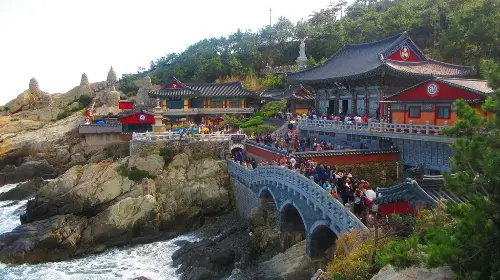
Beomeosa Temple is another place where you can get away from the big city. It also has scenic walking trails surrounded by nature. You’ll also find more Buddhism-related cultural and historical relics and treasures.
Once you return to the city after visiting the two temples, it will most likely be late in the afternoon. You’ll have more than enough time to check out the markets and shopping streets of Busan and have dinner before calling it a day.
The popular spots to go to are Seomyeon, Jagalchi Market, Nampodong, Gwangbok-ro Fashion Street, BIFF Square, and Gukje Market. It’s impossible to explore all these places from the time you get back to Busan until late at night. You can return to them in the next few days of your stay in the city. You can check the opening hours of some establishments online and time your return visit.
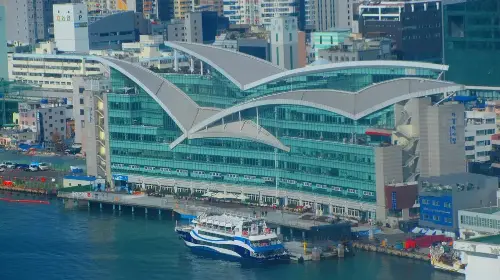
Day 5
After breakfast, make your way to Haeundae station. After arriving, exit the metro station and look or ask around for the bus bound for Haedong Yonggung Temple. This beautiful temple dates to the 14th century. Its location along the shore creates a picturesque view. Like many other temples in South Korea, you’ll find Buddhist relics and structures in the complex.
After checking out the temple, visit the famous beaches of Busan, such as Haeundae and Gwangalli. You can take a leisurely walk along Haeundae Beach all the way to Dongbaekseom Island. You can then take the metro or the bus to Gwangalli Beach. Depending on the season you visit, you can swim at either beach.
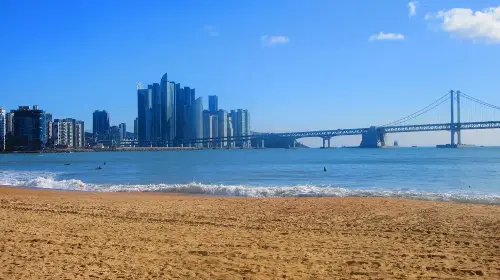
After beach hopping, you can return to Nampodong, Gwangbok-ro, Jagalchi Market, BIFF Square, or Seomyeon depending on your interest. You can shop and eat in these places. You can also visit the Busan Tower.
Try to catch the sunset in Gamcheon Culture Village. The village has quaint shops, art galleries, cafes, restaurants, and colorful houses. You can take photos from various vantage points. It’s especially lovely around sunset.
The closest metro station to the village is Toseong. From there you can get a taxi or ask around where you can catch the bus to the entrance. Other tourists will most likely be going there as well. It’s hard to miss.
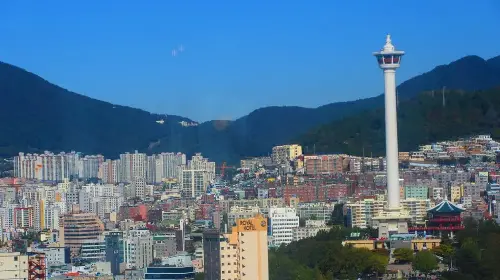
Day 6
Busan is one of my favorite cities in Asia. Its coastal city vibe made me imagine what a better developed Manila would look like.
After two days of hectic sightseeing, I’d recommend spending a day just hanging out in your favorite spots in the city. I particularly like the Haeundae Beach area. Despite its touristyness, I still like it.

You’ll find plenty of places to eat and several shops. You can take a long leisurely stroll along the coast. You can also hang out in other places in the city, such as Gwangalli Beach, Gamcheon Culture Village, Seomyeon, or anywhere you like, before leaving for Gyeongju late in the afternoon. Be mindful of the time because the bus terminal is far from most places tourists stay in.
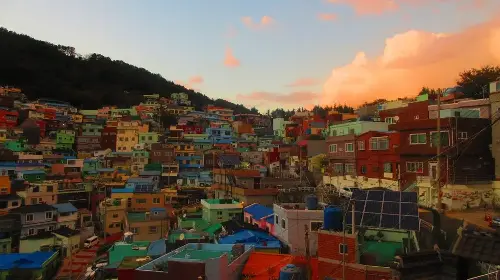
Gyeongju
Day 7
Start your day with a trip to the UNESCO-listed Yangdong Village. Your trip provides you with a glimpse of the Joseon Dynasty’s culture and history. The surrounding bucolic countryside is a stark contrast to the hustle and bustle of Busan and Seoul. You can catch a bus from the Gyeongju Intercity Bus Terminal to Yangdong.
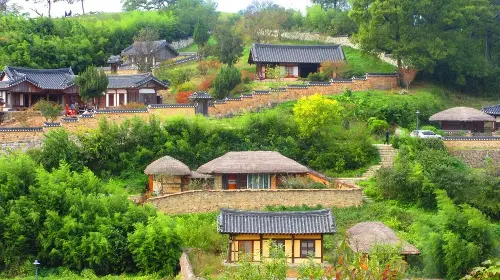
After lunch, return to Gyeongju Station or the Intercity Bus Terminal and board bus 10 or 11 bound for Bulguksa Temple. The latter is a UNESCO-listed World Heritage Site. The temple dates to 528 when King Beopheung of the Silla Dynasty accepted Buddhism. The complex was expanded and reconstructed over the centuries. You could spend hours just exploring the area that has many shrine halls and national cultural treasures.
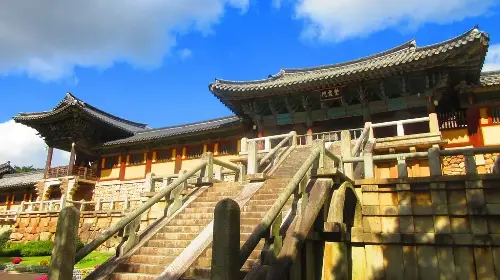
After a full day of sightseeing, head back to the city for dinner. After eating, check out the Donggung Palace and Wolji Pond complex to see it illuminated.
Day 8
Check out of your accommodation and get something to eat before sightseeing.
Gyeongju is a historic city that’s centuries old, with many relics of its glorious past serving as tourist spots. You’ll see burial mounds (they look like small hills) where royalty and unknown people from the Silla Kingdom are buried. The Donggung Palace complex includes Wolji Pond. This palace complex dates to the Silla epoch and used to be the residence of the princes of that time. It also has pavilions and gardens that create a serene ambiance.
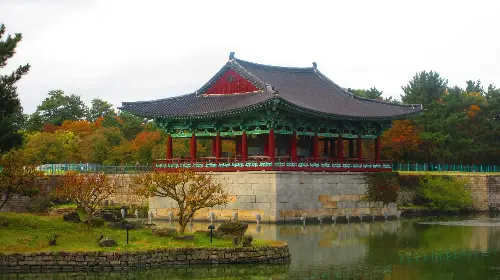
The Cheomseongdae Observatory is another ancient relic worth visiting. It dates to the 7th century and is one of the oldest observatories on the continent.
Return to your accommodation to get your things and then go to the bus station for your trip to Daegu.
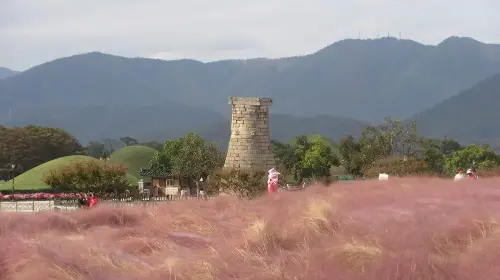
Daegu
Day 9
Daegu is one of the largest cities in South Korea. It’s a nice city to explore despite not having the same number of attractions as Busan and Seoul.
You can spend an entire day getting lost in its urban jungle. Explore Dongseongno, Bangwoldan, and Seomun Market. You can also check out the Gyesan Cathedral, Duryu Park, and the Daegu National Museum.
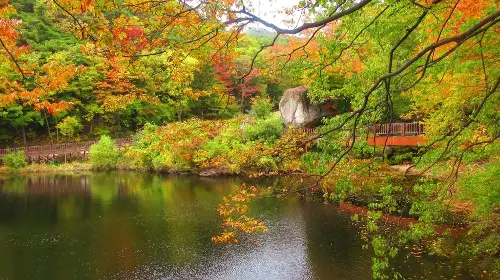
Day 10
After getting a glimpse of the city, go on a day trip to Palgongsan Park. You can take the bus from Dongdaegu Railway Station. Ask around which stop to wait in. Once in the park, you can walk along one of the trails that lead you to Donghwasa Temple. The temple dates to the 5th century. Soak in the peaceful ambiance of the complex and surrounding nature.
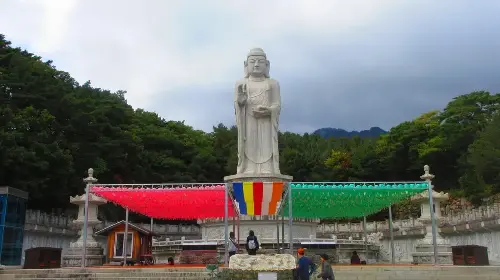
If you have more time, you can explore the other hiking trails in Palgongsan. It’s a huge park with scenic views, especially in autumn.
Day 11
Check out of your accommodation and hang out in your favorite café, restaurant, or any spot in the city. You can spend a chill and relaxed few hours before taking the bus bound for Seoul.
I recommend taking the bus from Dongdaegu then to either Dongseoul or Gyeongbu Terminal, it depends on the location of your accommodation in Seoul.
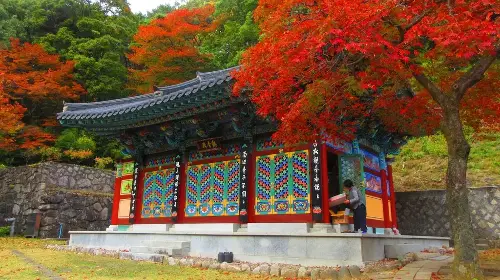
Seoul
Day 12
The time of your flight back to Manila will determine how much you can do on your last day in Seoul. You can return to your favorite spots, cafes, attractions, and restaurants in the city. You can also do some last-minute shopping if it’s within your budget.

How much will you spend?
South Korea isn’t a budget destination like some countries in Southeast Asia. However, it’s affordable for Filipinos as long as you plan your trip well and manage your expenses. A budget of approximately P50,000 or KRW 1,174,000 (that’s right, more than a million, haha!) per person covers the itinerary mentioned above and the following:
- A bed in a hostel dorm or a budget private room shared with one other person.
- Budget meals (convenience stores, supermarkets, fast food, food stalls) with the occasional splurge and night out with drinks.
- Use of public transportation within cities.
- Tickets for intercity buses (Seoul to Busan, Busan to Gyeongju, Gyeongju to Daegu, and Daegu to Seoul).
- Entrance fees to attractions
This budget doesn’t include flights and shopping. You can spend more or less than the amount mentioned above; it all depends on your travel style and preferences. You could spend more days in Seoul and Busan since both places have more attractions you can visit.
You could also easily spend a week in Seoul visiting the theme parks and museums, exploring the districts in-depth, and going to Nami Island. The itinerary above gives you a bit more of what the country has to offer in a short time. – Rappler.com
